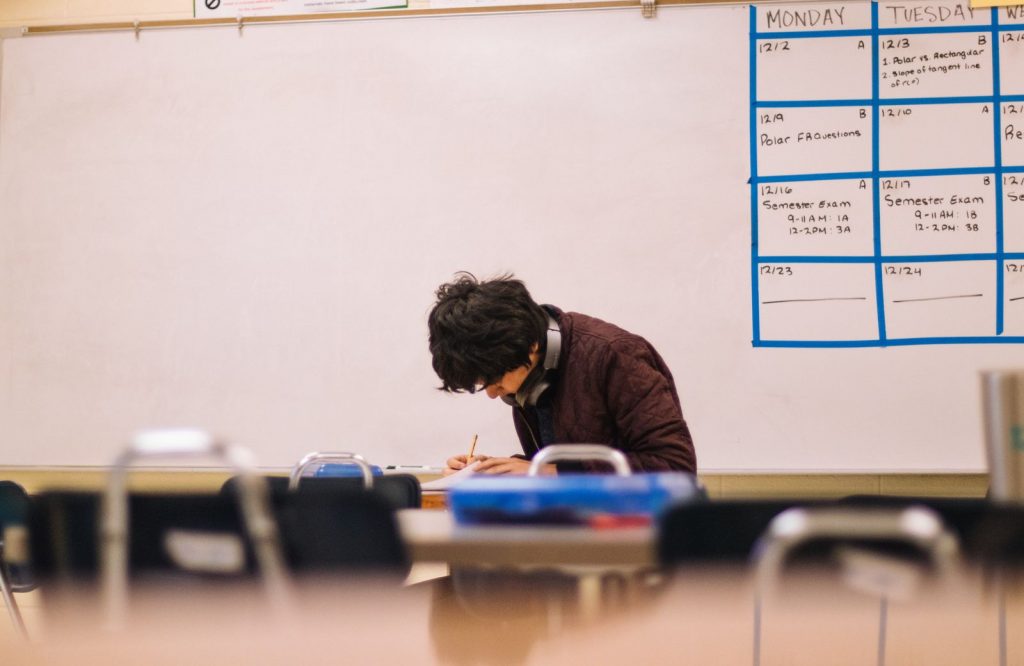
Setting students up for success: 3 crucial strategies parents and teachers shouldn’t ignore
Featured In
Whether you’re a parent, teacher, or both, supporting each student in your life is priority number one. See our 3 crucial strategies to set you up for success.
No matter their skills or challenges, students quickly benefit from these time-honoured approaches
Whether you’re a parent, teacher, or both, supporting each student in your life is priority number one. But if we’re being honest, students don’t always feel school is a place of ultimate wonder and discovery — as much as we’d like to believe otherwise. And while this is normal, it doesn’t have to be inevitable. There are plenty of tools you can use to encourage excitement around education.
But actually doing it is easier said than done, right?
Year after year, we do our absolute best to anticipate the obstacles our learners will face. We overwhelm ourselves with ideas, theories, and tools. We research so much we could write a book about research. Even then it’s hard to know what findings we should use and what we should avoid.
What we do know is that our students are unique, and each deserves attention specific to their needs. It’s important that parents and teachers learn a variety of teaching strategies so that their students aren’t treated like just a number. And that’s especially important for students with learning differences like dyslexia, ADHD, or visual impairment.
An individualized approach to teaching is clearly ideal, but it’s not exactly sustainable. Combining a few big-picture strategies, and making adjustments for individual students as needed, is a great way to set more students up for success without burning yourself out.
These tried-and-true approaches — great for all kinds of learners — can go far in helping students feel more confident, curious, and capable in their education.
Give students more choice
When students are given the opportunity to make meaningful choices, they often feel:
- Happier
- More confident + independent
- More engaged
- A greater sense of responsibility + ownership
Giving students the opportunity to make their own choices at home and in the classroom helps them feel part of the process, rather than under the thumb. And that can make a big difference in shifting their attitude toward learning in the positive direction.
Deanna Marie Lock of Spaces4Learning says it perfectly. “[Choice] strengthens engagement. Students are more invested in their education if they’re allowed to make their own choices.”
They’re also more confident when they’ve been given freedom to decide how they’d like to learn, instead of being told how they’re going to learn. Lock also says students who influence their own learning are more empowered to take ownership of their education.
“Instead of waiting for the teacher to supply them with answers, students are encouraged to think, investigate and learn for themselves.”
Here are some great ways for teachers and students to give students more autonomy in their education.
Teachers:
- Let students choose where they sit or who they work with
Giving students this choice helps create a culture of trust and autonomy in the classroom right out of the gate. And if students make choices that end up hindering their performance in the classroom, you always have the authority to change things around. It’s better to give students the benefit of the doubt and correct the mistake, than treat them as too irresponsible to make the choice for themselves from the start. - Let students choose their assignments
Podcasts, presentations, or posters can investigate the world just as rigorously as a good old-fashioned essay. Encourage students to find mediums and materials that speak to them, or think outside the box to bring new ideas to the table. You may find yourself learning just as much as they do in the process.
Parents:
- Give your kids a say
Allow them some freedom to choose when they do chores or homework, for example — and in what order. This can help give them a sense of control and confidence in their day, and make them feel like they’re choosing what to spend time on, rather than being told. This is a great skill to encourage early on, and will be useful when they get out on their own and have to make more of their own decisions every day. - Be okay with failure
Life is rarely a series of perfect choices you’re in total control of. At some point, failure is inevitable. And while you shouldn’t lead your children into choices that will irreversibly harm them, you should find some areas in life where you let go. Give your kids the chance to make choices that could end in small failures. This gives them the chance to solve their own problems, take ownership for their decisions, and understand consequences. Many times you end up learning much more from your mistakes than you ever would otherwise.
Choice helps empower students to be confident, curious, and independent at home and at school. But balancing freedom and structure is not always easy or straightforward. You’ll need to experiment a bit to see what works and what doesn’t.
And while you’re likely to make a few mistakes as you’re finding out the right mix of hands on and hands off, the payoff in doing so can be huge.

Create a question-friendly environment
Encouraging students to be curious and ask questions can make a huge impact on classroom engagement. But many don’t feel comfortable asking them. The fear of looking dumb or being ridiculed by their peers often stops many students from speaking their mind. Not only does this make them less likely to ask for help when they need it, but it can also dampen their natural curiosity and drive to explore — both of which fuel the desire to learn.
Many experts say asking questions is actually a sign of intelligence. And while that may be true, it’s not exactly common knowledge. Here are a few ways to help students feel smart for asking questions.
- Lead by example
Be curious in front of students. If you don’t know something yourself, be open and honest about it. Let them see you work through your critical thinking skills in real time. Ask students for suggestions or encourage them to dive into a counterpoint. An “I don’t know, what do you think?” attitude can go far in building more engagement. - Shut down judgement or ridicule
Establishing a no-tolerance policy for poking fun at other students when they ask a question is essential to build a pro-curious learning environment. Double down on the good energy and put an emphasis on celebrating students for working through problems. Let out a cheer when they arrive at a solution. You’ll see students jump at the opportunity to add to the conversation in no time. - Make space for discovery and discussion
Give students more assignments to explore something that interests them. Then make space to share and discuss their work with others. Ask questions. And be encouraging when they don’t know the answer. Instead of treating an “I don’t know” as a failure, treat it as an opportunity to learn more. Opening up discussion about topics that are relevant to their interests encourages them to be curious about the world around them and think of learning as something that can be self-directed, not just taught.
Students engage more meaningfully in a curiosity-fueled environment. And when students care about what they’re learning, the classroom becomes a place of discovery, rather than a place of anxiety or obligation. Encouraging questions and wonder in students sets them up for a lifetime of learning and a broader understanding of what education really is.
Experiment with new tools
Giving students different ways to take in what they’re learning can encourage students to build an approach to learning that works for them. Some students respond well to listening, some prefer an experiential hands-on approach, some like to read about ideas in a book.
Presenting the same information in a variety of ways can help students grasp more of what you’re teaching, and more importantly, understand how to adapt situations to suit their own strengths.
And there are a ton of ways to mix it up. Instead of a long list of reading assignments, include a mix of reading, relevant videos online, podcasts, and hands-on activities to cover the same topic.
Reading assignments can be particularly difficult for students, even if you don’t assign very many. A great tool for students who find reading especially challenging — or have learning differences like ADHD, dyslexia, or low vision — is text-to-speech. It’s a powerful tool that can help all students improve focus, comprehension, retention, and productivity, whether they prefer to read or listen.

Text-to-speech can help students improve
- Focus
- Retention
- Comprehension
- Productivity
Advanced text-to-speech apps like Speechify let students listen to almost anything they have to read online or on their phone. Speechify can turn any printed text, PDF, Google or Word document, email, or article online into speech— read by the highest-quality AI voices in the industry.
Students can listen and follow along at the same time to double-down on information. And it’s great for second language learners, too. Giving students a variety of tools like text-to-speech can make common learning barriers like reading no big deal.
See Speechify in action in the classroom here.
The school year ahead
Using these strategies can empower your students to go further this school year than they have before. By amplifying their curiosity, building their confidence, and levelling up their support tools, you can help your students achieve what you — and they — know they’re capable of.
To explore more about teaching strategies for teachers and parents, click here.
And if you’re ready to try Speechify yourself, get the Chrome extension for free right here.
You can download it on your phone for iOS and Android, too.


Cliff Weitzman
Cliff Weitzman is a dyslexia advocate and the CEO and founder of Speechify, the #1 text-to-speech app in the world, totaling over 100,000 5-star reviews and ranking first place in the App Store for the News & Magazines category. In 2017, Weitzman was named to the Forbes 30 under 30 list for his work making the internet more accessible to people with learning disabilities. Cliff Weitzman has been featured in EdSurge, Inc., PC Mag, Entrepreneur, Mashable, among other leading outlets.
 Previous
Previous